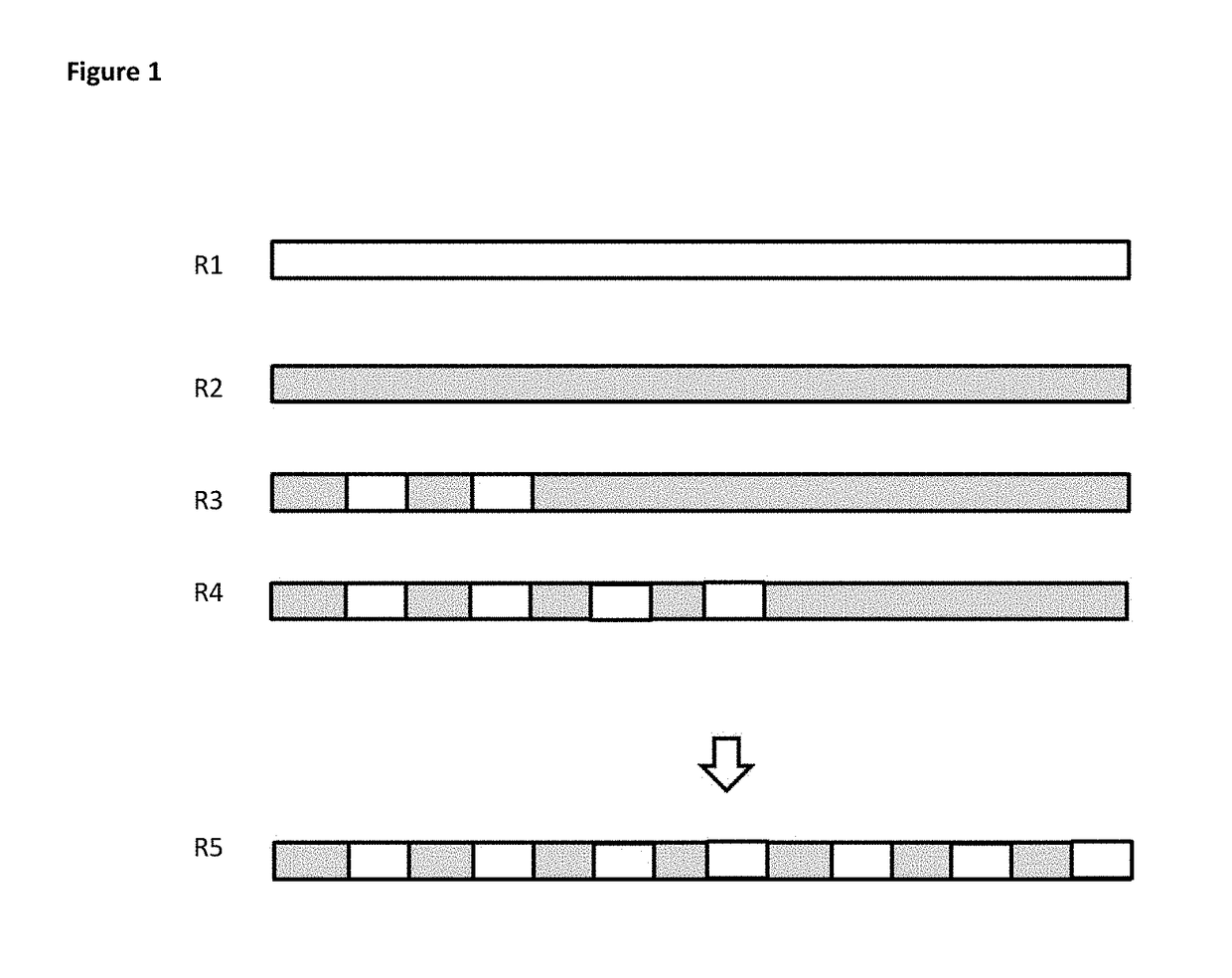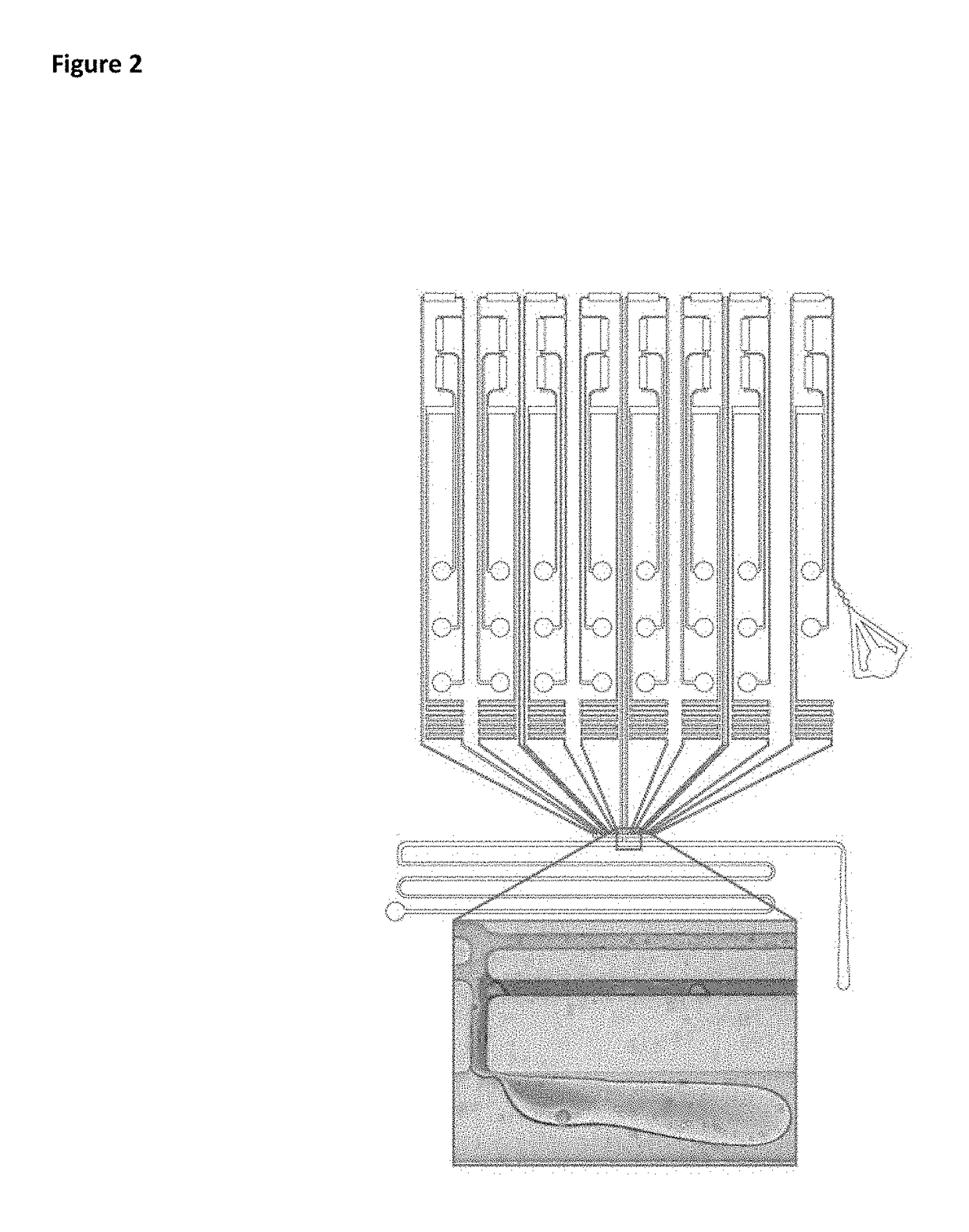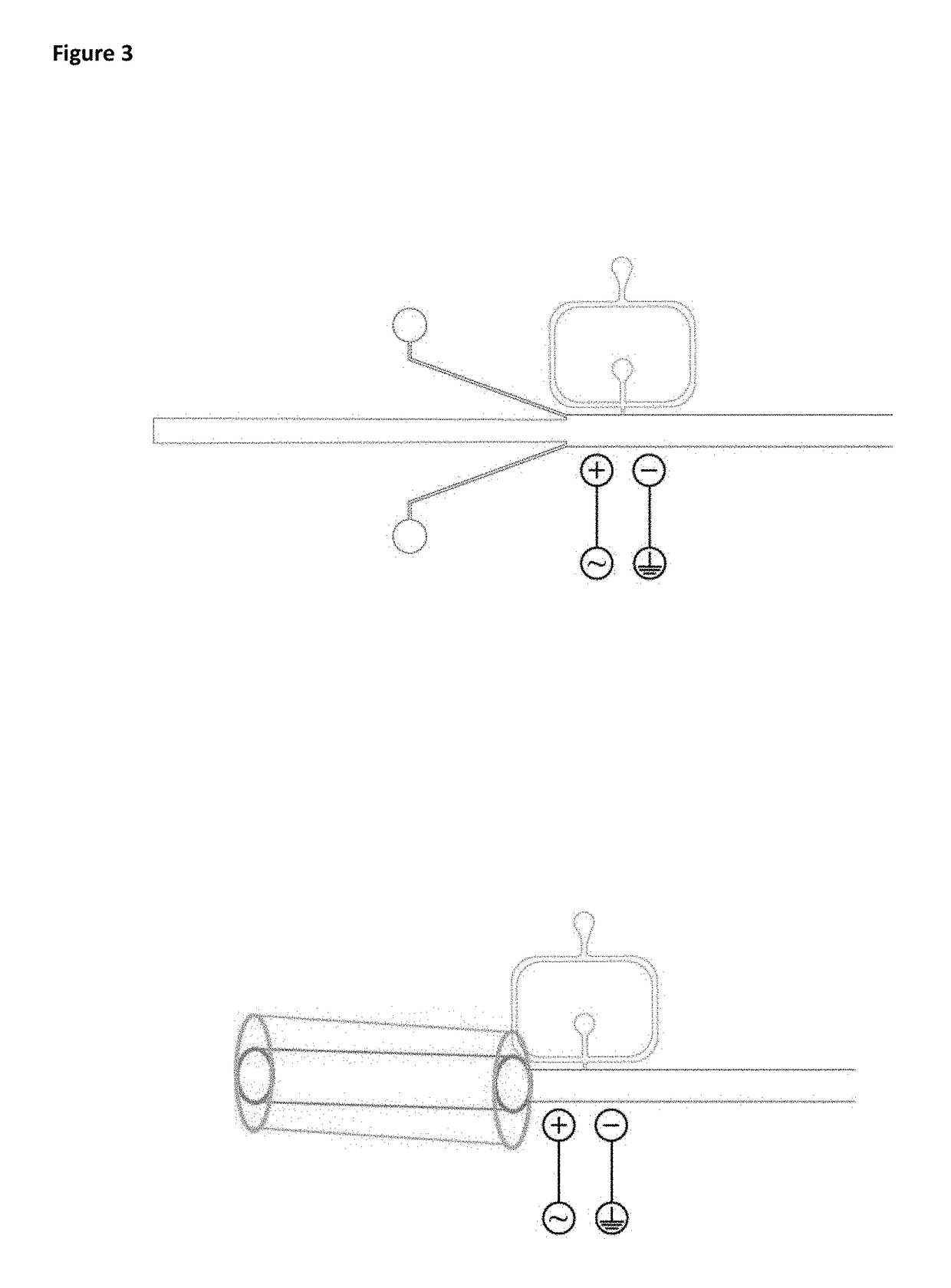Microfluidic Device for the Generation of Combinatorial Samples
a microfluidic device and combinatorial technology, applied in the field of microfluidic devices, can solve the problems of difficult to systematically generate all possible droplet pairs, poor control level, and strict limitations of the maximum flow rate and hence throughput of the negative pressure driven system, and achieve the effect of higher hydrodynamic resistan
- Summary
- Abstract
- Description
- Claims
- Application Information
AI Technical Summary
Benefits of technology
Problems solved by technology
Method used
Image
Examples
Embodiment Construction
[0047]The present disclosure provides a microfluidic device allowing the generation and screening of combinatorial samples in a high throughput fashion. Starting with a number of n inlets (into which n different compounds can be injected) a total of up to 2n−1 chemically distinct samples can be generated in an automated fashion.
[0048]All channels providing a liquid to the droplet maker are arranged “upstream” of the droplet maker within the meaning of the instant disclosure. The outlet channel transporting the droplets or sequence of droplets is arranged “downstream” of the droplet maker. The terms droplets or plugs are used synonymously.
[0049]An aqueous liquid within the meaning of the present disclosure comprises every liquid that is miscible with water. In contrary, the immiscible phase comprises every liquid that is not miscible with water, like oil.
[0050]The device of the present disclosure can be used for generating an optical barcoding system for the newly generated combinato...
PUM
| Property | Measurement | Unit |
|---|---|---|
| time | aaaaa | aaaaa |
| diameter | aaaaa | aaaaa |
| diameter | aaaaa | aaaaa |
Abstract
Description
Claims
Application Information
 Login to View More
Login to View More - R&D
- Intellectual Property
- Life Sciences
- Materials
- Tech Scout
- Unparalleled Data Quality
- Higher Quality Content
- 60% Fewer Hallucinations
Browse by: Latest US Patents, China's latest patents, Technical Efficacy Thesaurus, Application Domain, Technology Topic, Popular Technical Reports.
© 2025 PatSnap. All rights reserved.Legal|Privacy policy|Modern Slavery Act Transparency Statement|Sitemap|About US| Contact US: help@patsnap.com



